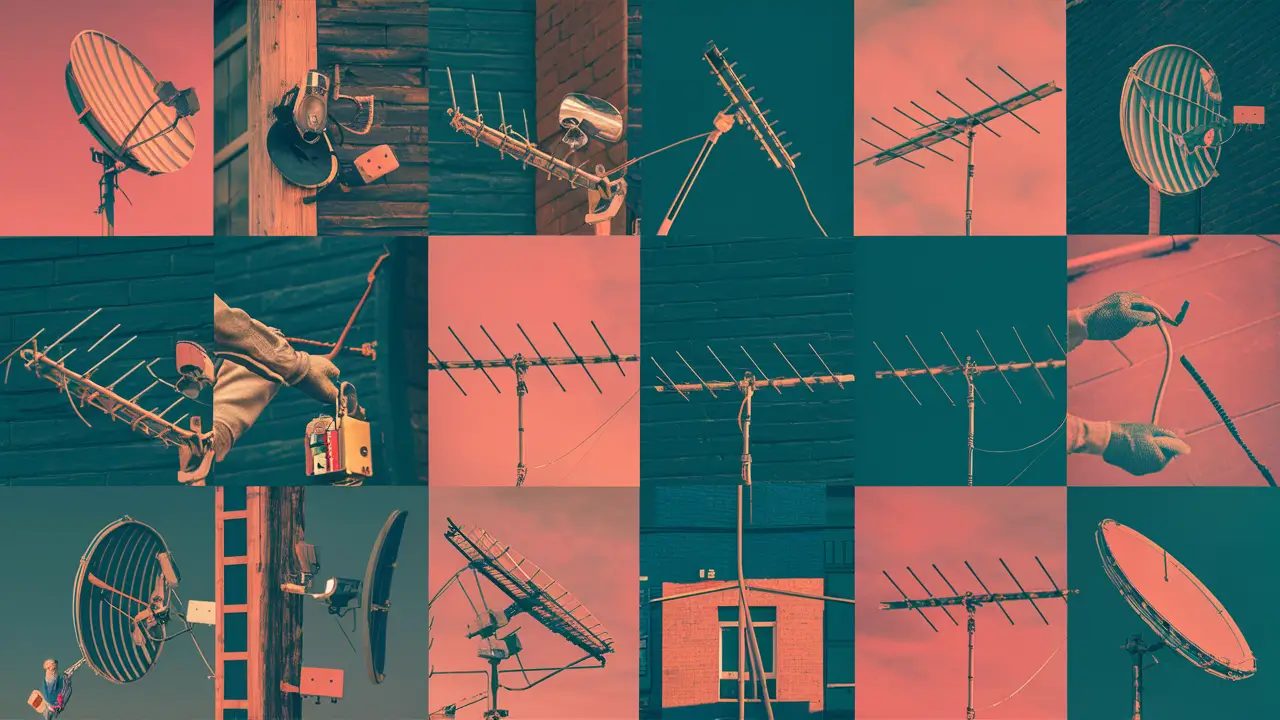
This is especially appropriate if your SATTV INTERNET has become obsolete and you are not using it; instead you can transform it into an over the air TV antenna. Converting a satellite dish into an antenna is a simple and cost-effective procedure that can enable you to receive free over-the-air broadcasting stations. Follow the guide below to transform the satellite dish into a working TV antenna.
What You Need
- Old satellite dish; minimum diameter of the dish required is 36 inches.
- Coaxial cable, length required to connect dish location to the TV
- Brackets for placing of the antenna such as a pole, mast or dish mount
- Antenna rotor (optional)
- Any small tools that may be required such as drill, wrench set, zip ties and so on.
The first step to undertake is to choose a location.
Select a site where it is convenient to install the satellite dish and where it has an unobstructed view of the local television transmitters. The higher the location the better. The roof is perfect but it can also be mounted on the side of the building, a pole, or even on the ground. The only thing you want to avoid is any major form of obstruction. An antenna rotor enables the dish to be rotated in various directions in order to make reception adjustments.
Step 2: Look into the Signal Finder Map
Log onto a site such as Antenna Web. org to see a signal map that displays the distance and broadcast frequencies of the TV towers around you. This will assist in properly orienting the antenna later on. If most towers are only in one general direction, there will be no need for an antenna rotor.
Step 3: Unbolt the LNB arm This is the final step that has to be done to ensure that you have disassembled the structure completely.
One of the initial changes that can be made is to detaching the LNB arm of the dish feedhorn. LNB is the box on a little bracket coming out of the dish that captures the signals from satellites, which means that when you take it off you have an open dish that can also receive other signals. All that is required is to remove the LNB arm bracket from the dish.
Step 4: Waterproof Components
Those parts that must be open to the environment they should be protected to avoid moisture getting into cables and connection areas. Electrical boxes made of plastic are ideal housings that may be used to protect the parts. Caulk around cables where they pass through a box or where they are affixed to the dish mount.
Step 5: Mount Dish Frame
Place the satellite dish frame on the chosen mounting location and fix it. Retain the current structure of the satellite dish hardware if physically possible. If mounting new components, it is recommended to follow the manufacturer instructions. Bring the coaxial cable from the intended antenna position to where the wiring will penetrate the house. Always leave some slack in the service loop for the purpose of making some adjustments.
Step 6: The installation of Signal Amplifier
To increase reception, most DIY satellite dish antenna installations include a preamplifier such as the RCA TVPRAMP1R. Attach it on the dish arm at the point where you once had the LNBs fixed by using things like hose clamps or zip ties. Take the output from the preamplifier and run it through the coaxial cable to your wiring system indoors. The electronics of an amplifier is protected by a waterproof plastic box.
Step 7: Proper Orientation of Antennas
With the dish securely mounted, physically connect all the parts electrically, it is advisable to connect it to a television set to help in optimizing the aim with the help of the Television’s signal analysis. Use the signal finder map that was discussed in the previous step to approximately position the dish in the correct general direction for local antenna TV channels. Adjust the aim while observing the signal strength to tap into the best reception performance from the TVs. Stow all hardware once the correct orientation has been achieved.
Step 8: Connect to the TV
The final coaxial cable should be run from the antenna wiring inside to your television. Perform an auto channel scan of your TV to find and program all the over the air channels being received from the nearby TV broadcasting towers. If channel availability has increased, then rescan the list from time to time. If you didn’t manage to capture some important channels and you have to change the aim constantly – connect an antenna rotor.
Tips
- In essence, the size of the satellite dish dictates the amount of signal it can capture. Search for your dishes with a size of 36 inches across or larger.
- Try to place the dish as high as possible so that you get an unobstructed view which interferes with reception.
- Hold face dish to get the best signals from most of the stations. A stage for an antenna adds capability to either pan or tilt aim.
- Boost the signals with an outdoor rated preamp mounted at the dish focal point for optimum signal reception.
- Make sure that all connections and devices outside the house are protected by weatherproof to avoid moisture penetration.
- Stabilize the dish effectively to avoid any wind blowing to alter the orientation of the dish.
Converting an old satellite dish into an HDTV antenna is a fun do-it-yourself activity where you can transform old equipment which is not used anymore into a working antenna for free over the air TV broadcasts that may be available in your area after you decide to cancel cable or satellite subscription. However, with the right planning, materials and installation it is possible to turn the satellite dish into an antenna for getting news, sports, movies and more. Here are the easy steps on how to convert your satellite dish to a working TV antenna.
Ready to upgrade your TV experience? Call us now at (877) 471-4808 to find the perfect Dish Network plan for you! Don’t miss out on great entertainment—our team is here to help you choose the best package and get you started today.





